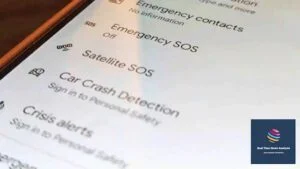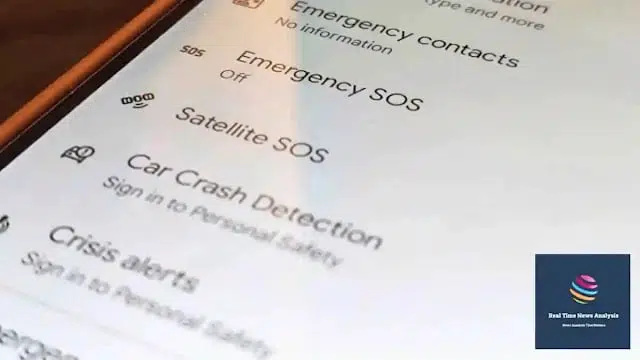For Regular Latest Updates Please Follow Us On Our WhatsApp Channel Click Here
Last updated on October 7th, 2024 at 02:26 am
Introduction: Android Phones And Satellite SOS Feature A Major Game Game-Chang In Emergency Situations
Section 1: Understanding Android Phones
Android phones have become a ubiquitous part of our lives, with billions of users worldwide. These devices, manufactured by various companies like Samsung, Google, and OnePlus, run on the Android operating system and offer a diverse range of features and functionalities.
Section 2: The Need for Satellite SOS Feature
For Regular Latest Updates Please Follow Us On Our WhatsApp Channel Click Here
While Android phones offer various communication options, they have limitations, especially in emergencies. In remote areas, during natural disasters, or even in certain urban settings, cellular service can be unreliable or completely unavailable. This lack of connectivity can hinder contacting emergency services, potentially risking lives.
A satellite SOS feature has the potential to bridge this crucial gap. By utilizing satellite communication technology, this feature would allow users to send emergency messages even when traditional cellular networks are down. This can be truly life-saving, especially for individuals venturing into remote areas or those caught in unforeseen circumstances.
 |
| Image Credit: Android Headlines |
Section 3: Introducing Android Satellite SOS Feature
Google is reportedly working on integrating satellite communication into Android devices, specifically starting with Pixel phones. This feature would leverage satellites orbiting the Earth to facilitate communication in situations where traditional cellular networks are unavailable.
Here’s how it might work:
Users will be able to access the Satellite SOS feature through the Safety and Emergency section in their settings.
Once activated, the feature will enable users to send emergency messages (text or call) via satellite to relevant emergency services.
The feature will likely offer additional functionalities such as:
Sharing location data with emergency services using Google Maps.
Answering pre-determined questions to provide crucial information about the emergency.
Try out a demo to familiarize yourself with the feature’s functionalities.
Section 4: Advantages of Android Satellite SOS Feature
The integration of a satellite SOS feature on Android phones holds several advantages:
Global Coverage: Unlike cellular networks with limited reach, satellite communication offers near-global coverage, making it invaluable in remote locations.
Reliability: Satellite communication is known for its reliability, even in extreme weather conditions or during natural disasters, potentially providing a lifeline when traditional networks fail.
Complementary Technology: The satellite SOS feature would complement existing emergency services and technologies, providing an additional layer of security and communication in critical situations.
Section 5: Implications for Android Users
The introduction of a satellite SOS feature could have significant implications for Android users worldwide:
Peace of Mind: This feature can provide users with a greater sense of security and peace of mind knowing they have a backup communication option in emergencies.
Increased Safety: The ability to contact emergency services even in remote locations or during network outages can significantly improve user safety.
Wider Range of Activities: This technology can encourage exploration and participation in outdoor activities with the knowledge that help is accessible even in unforeseen circumstances.
Conclusion:
The potential integration of a satellite SOS feature into Android devices is a promising development that could significantly enhance user safety and communication capabilities, especially in emergency situations. While the feature is currently under development and a release date hasn’t been announced, it’s important to stay updated on its progress. This potentially life-saving technology can empower Android users with greater peace of mind and the ability to reach help when needed most. Stay tuned for further updates, and feel free to share this information with others who might benefit from this potentially life-saving technology.
For Regular Latest Updates Please Follow Us On Our WhatsApp Channel Click Here
